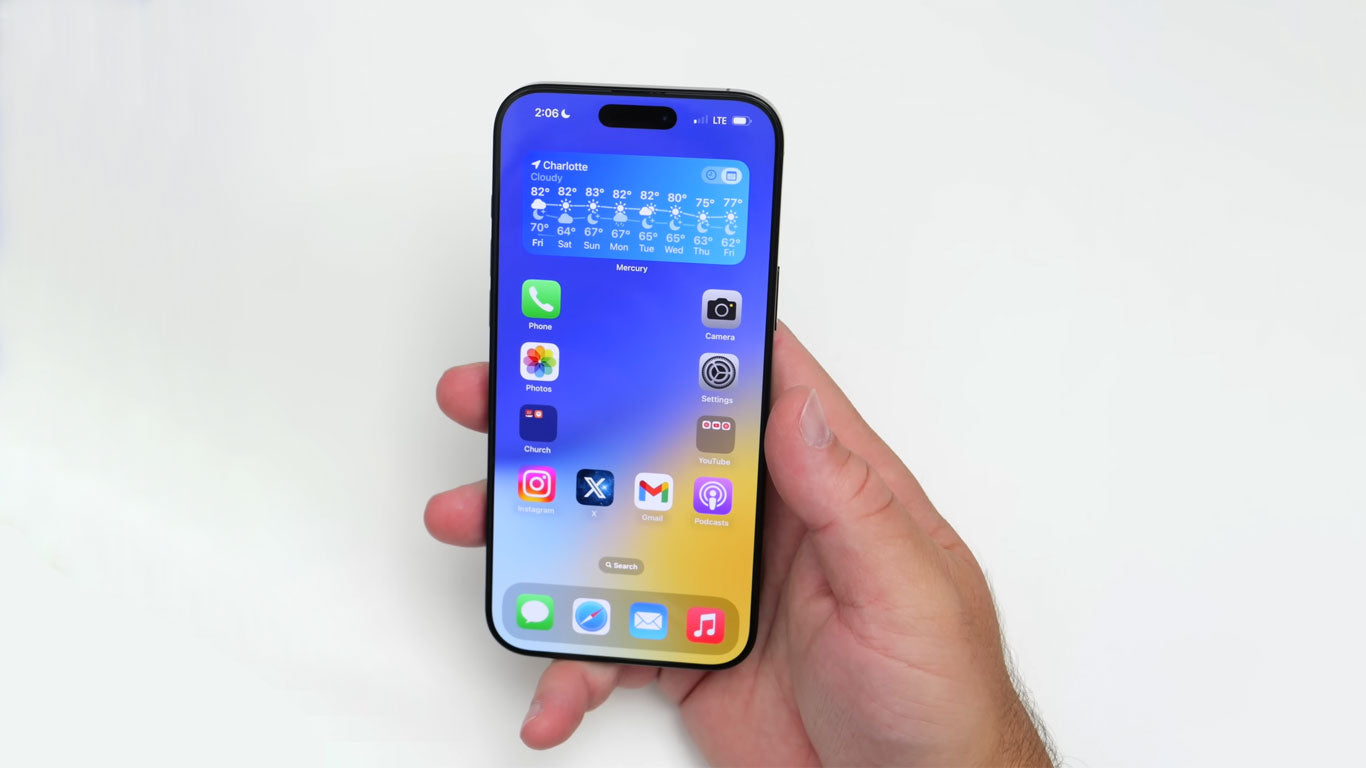The Evolution of iPhone Screen Refresh Rates: From 2007 to Now

Display performance is crucial to the user experience, and one key aspect of this performance is the refresh rate. The refresh rate refers to how many times the display updates its image per second, usually measured in Hertz (Hz). For instance, an iPhone with a refresh rate of 60Hz refreshes the visual information on the screen 60 times each second, resulting in a smooth viewing experience. With advanced technology, Apple has implemented higher display refresh rates, improving everything from scrolling to gaming. The introduction of ProMotion technology has brought options with refresh rates as high as 120Hz, providing an incredibly responsive experience when navigating applications or playing graphics-intensive games.
Impact of High Refresh Rates on User Experience
Understanding refresh rates helps users appreciate their iPhone's display capabilities.
Smoothness and Responsiveness
High refresh rates, especially in iPhone models equipped with ProMotion technology, significantly enhance user interactions. Just imagine scrolling through your social media feed or flipping through photos; a higher refresh rate, like 120Hz, provides an incredibly smooth experience. For instance, when a user swipes through apps or plays a racing game, it feels seamless and natural. The reduced motion blur and increased clarity enable users to interact with their devices without frustration. Key benefits include:
-
Fluid Scrolling: Scrolling feels ultra-smooth, making it easier to find information without visual jarring.
-
Responsive Touch: Touch inputs react faster, allowing for quicker response times in games and applications.
-
Enhanced Visuals: Fast-paced movies and streaming content appear sharper and more immersive.
Battery Life Considerations
High refresh rates can improve responsiveness but they can also impact battery life. Running a display at a higher refresh rate may consume more power. In activities such as gaming or browsing, users might observe faster battery depletion compared to devices with a 60Hz refresh rate limit. To address this issue, iPhones have started to include adaptive refresh rates, which adjust dynamically based on usage. For example,
-
Lower Rates: When idle, the iPhone may revert to 10Hz.
-
High Demands: It escalates refresh rates for fast-paced content.
This balance allows users to enjoy smooth experiences without draining battery life excessively, making the technology both advanced and practical.
Evolution of Refresh Rates in iPhone Models
iPhone 2G to iPhone 5S (2007-2013)
The journey of iPhone refresh rates began with the original iPhone 2G in 2007, featuring a modest 60Hz refresh rate. At this time, the focus was primarily on introducing users to the multi-touch interface, with the core experience designed to feel smooth and intuitive. As subsequent models launched, improvements remained incremental.
-
iPhone 3G (2008): Maintained the 60Hz refresh rate but introduced the App Store, enriching interaction without altering the display dynamic.
-
iPhone 4 (2010): Brought the Retina display which enhanced sharpness but kept the refresh rate consistent at 60Hz.
-
iPhone 5 (2012): Though it sported a larger 4-inch display, the refresh rate remained at 60Hz, as Apple concentrated on display quality rather than refresh rate enhancements.
Despite the limited focus on refresh rates during this period, each iteration pushed the boundaries of user engagement and set the stage for more robust advancements.
iPhone 6 to iPhone 11 Pro Max (2014-2019)
As smartphone demand grew, so did the importance of refresh rates. The release of the iPhone 6 in 2014 marked a turning point, keeping the refresh rate at 60Hz while enhancing the overall display experience with larger dimensions and improved LCD technology.
-
iPhone 6S (2015): Introduced 3D Touch, allowing users to engage dynamically, even with the same 60Hz refresh rate.
-
iPhone 11 Series (2019): While still at 60Hz, the iPhone 11 Pro Max showcased advanced software optimizations that provided smoother animations and responsive touch experiences.
iPhone 12 to iPhone 16 Pro Max 2020-2024)
In 2020, Apple made a significant advancement with the iPhone 12 Pro series by introducing ProMotion technology. This allows for refresh rates as high as 120Hz. This technology was highly anticipated by users seeking a smoother experience. However, with the release of iPhone 16, it has been reported that Apple limits the refresh rate to 80Hz in most scenes. However, it can still reach up to 120Hz.
Comparing iPhone Refresh Rates with Competitors
Android Flagship Devices
When considering refresh rates, it's important to note that Android flagship devices have been leading the way for years. While iPhones have introduced ProMotion technology with refresh rates of up to 120Hz, many Android devices at the same price point offer a 120Hz refresh rate, with some even reaching up to 144Hz.
Conclusion
In conclusion, while Apple has made significant strides in improving the display technology of its iPhones, particularly with the introduction of ProMotion, it still lags behind some Android flagship devices in terms of refresh rate capabilities. Despite this, Apple's focus on overall user experience and display quality continues to set its devices apart in a competitive market. As the industry evolves, it will be interesting to see how Apple balances refresh rate advancements with its other technological innovations.
-
Posted in
iphone screen, refresh rate, screen




